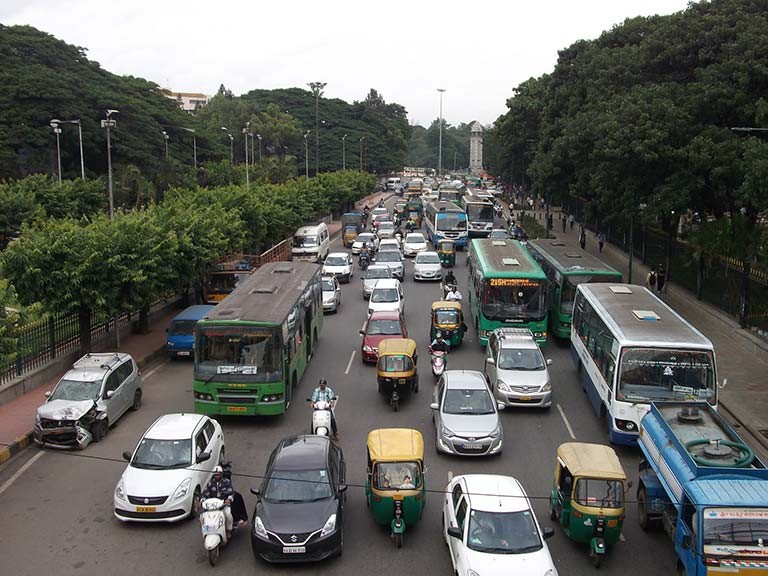Making streets inclusive spaces
These challenges will be explored during a panel discussion with Gopakumar for the book’s launch at 4TH SPACE on December 11.
With an ever-increasing number of people sitting in their cars, streets have steadily become more dangerous for women and other vulnerable groups, street vendors have seen a negative impact on their livelihood and pollution is on the rise.
Of course, scaling back car use is an obvious way of overcoming the negative social impacts associated with motorized vehicles. But as many North American jurisdictions have shown, getting people to abandon their vehicle for walking, cycling or using public transit is challenging.
“It’s very difficult to pedal back because cities with high automobility get locked into this paradigm of transportation and important structural changes need to be made to cities for urban landscapes to move away from automobiles,” Gopakumar explains.
For any real change to occur, he says, governments need to implement mobility solutions focused on social justice and equity. Though the problems associated with automobility can differ in the Indian and North American contexts, solutions will be found when streets are seen as a place of social interaction.
“There are commonalities with what makes our cities so vibrant and so attractive, it’s their streets,” he says. “If everyone is sitting in a car, the street isn’t really a public space anymore, it’s more of a pipeline. If we want to solve some of the problems associated with automobility, we need to make city streets the inclusive public spaces they used to be and not just a place for cars.”
Register for Installing Automobility book launch at 4thSPACE on December 11.

 Govind Gopakumar: “There are commonalities with what makes our cities so vibrant and so attractive.”
Govind Gopakumar: “There are commonalities with what makes our cities so vibrant and so attractive.”
 Govind Gopakumar: “Unfortunately, America’s dependence on the car has spread all over the world and this is causing a great deal of negative social and environmental impacts.”
Govind Gopakumar: “Unfortunately, America’s dependence on the car has spread all over the world and this is causing a great deal of negative social and environmental impacts.”